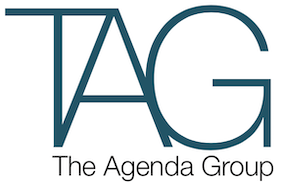Cities are unquestionably the flavour of the month. And it may prove to be a very long month at that.
Only this week have we received the latest in a long line of warnings, this time from the Australian Council of Learned Academics, about the unsustainability of the growth in our cities without better transport planning and the requisite investment in infrastructure and services.
A notable change in tack from the Federal Government under new Prime Minister Malcolm Turnbull has seen the appointment of a ‘Cities’ Minister. An avowed fan of public transport, Prime Minister Turnbull has made clear he will now countenance federal funding support for metropolitan rail projects – an approach that was off the table under his predecessor.
The Federal Opposition has also moved to bolster its credentials in this area, announcing this week that Infrastructure Australia would have its remit expanded under a Shorten Government to move beyond merely advising on the suitability of infrastructure projects, but will go further in acting as a financial enabler of preferred projects.
The identified shortlist of likely projects includes metropolitan transport projects such as a rail line to Sydney’s Badgerys Creek airport, Melbourne’s Metro Rail project, Brisbane’s Cross River Rail project, and the electrification of the Gawler rail line in Adelaide.
At a state level, cities (not just Melbourne – growing regional cities is an important adjunct to lessen some of the pressure on our capital cities) will be the beneficiary of the establishment of Infrastructure Victoria which will be tasked with the preparation of a 30-year Infrastructure Strategy to identify Victoria’s infrastructure needs and how they can be met.
The release of the next iteration of Plan Melbourne, the Victorian Government’s metropolitan planning strategy that will guide the city’s growth to 2050, is due out soon for community feedback.
Burgeoning population growth has already put our cities under pressure, and the challenges are growing. Take Melbourne as an example. On current estimates, by 2051 the city will need to accommodate more than 7.7 million people, and provide an additional 1.7 million jobs.
Housing, moving, employing, educating and caring for so many more people pose a complex web of interrelated policy, financial and logistical problems that will vex governments and communities alike.
Whilst big-ticket transport projects tend to steal the headlines, planning strategies that help get the housing mix right (e.g. location, affordability, type and size), economic policies that provide the jobs of the future, migration and population policy and government service delivery models are all vital inputs in delivering cities that can sustain both growth and liveability.
There’s lots of upside to getting it right. It will be good for the environment, it drives productivity improvements for business, and it ensures that social and health services are available and accessible to those who need them.
It’s also great news for engineers who were worried about their job prospects post the mining boom. Looks like there’ll be of rail lines, roads, tunnels and the like in the pipeline. And whilst the projects might not flow as fast as some would like, policy and political needs dictate that they will happen.
In fact it might be an idea to check the current share prices for engineering firms…
